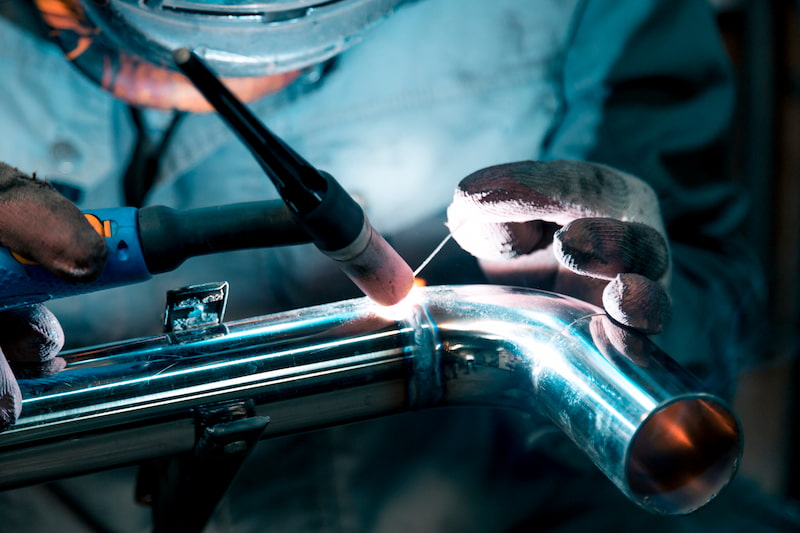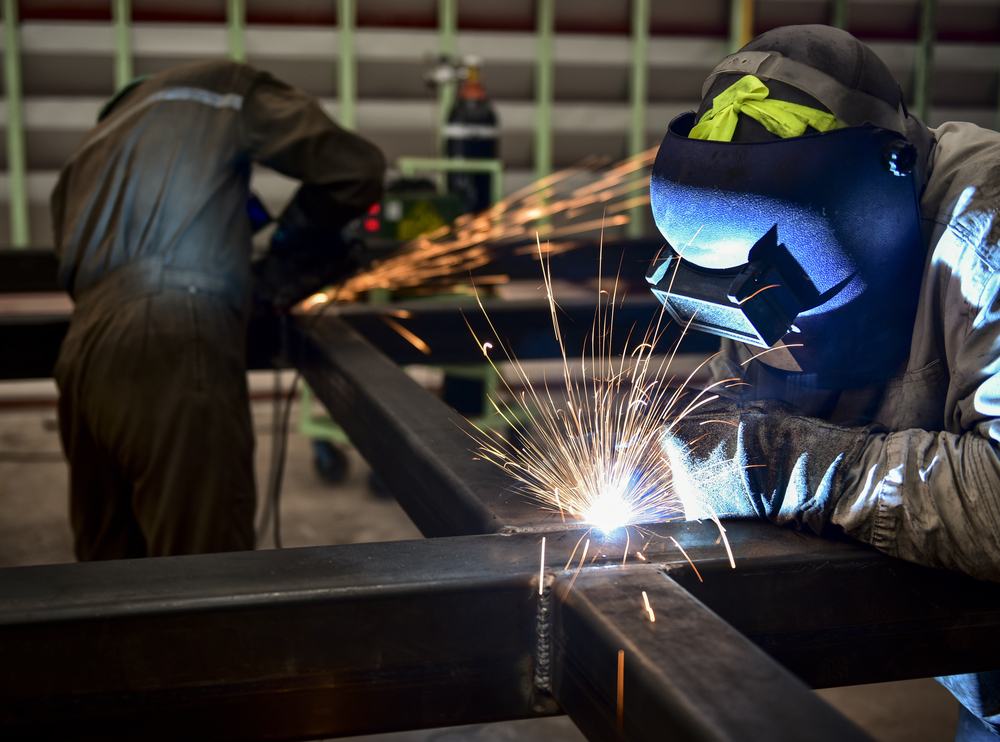All About Welding: Key Insights Into Techniques and Best Practices for Success
Welding incorporates a selection of strategies, each fit for particular materials and applications. Comprehending these approaches, such as GMAW, SMAW, and TIG, is necessary for accomplishing suitable results. The right equipment and security practices can not be forgotten. As preparation and repairing play critical roles in the welding procedure, mastering these aspects can greatly boost the quality of the end product. What are the vital factors that guarantee an effective weld?
Recognizing Different Welding Techniques
Welding techniques encompass a selection of approaches, each fit to details applications and products. Amongst the most usual techniques are Gas Metal Arc Welding (GMAW), Shielded Metal Arc Welding (SMAW), and Tungsten Inert Gas Welding (TIG) GMAW, likewise referred to as MIG welding, is preferred for its rate and convenience, making it perfect for thin materials. SMAW, or stick welding, is favored for its simpleness and effectiveness in exterior environments, specifically with thicker metals. TIG welding supplies precision and control, making it ideal for detailed work and non-ferrous metals (Montana Mobile Welding and Repair Belgrade Fabrication). Each method has its special benefits and factors to consider, allowing welders to choose the very best technique based on the project's requirements, product type, and wanted outcomes. Comprehending these techniques is necessary for successful welding
Essential Welding Tools and Tools
While different welding strategies need certain abilities, the best tools and devices are equally important for attaining quality results. Important welding tools includes welding makers, which differ relying on the strategy-- such as MIG, TIG, or stick welding. Safety equipment, consisting of headgears, gloves, and aprons, warranties safety and comfort during the process. On top of that, clamps and fixtures help safeguard products in area, making sure accuracy in welds. Consumables like welding poles, wire, and protecting gas are likewise critical parts that influence the high quality of the weld. Furthermore, tools such as cutters and mills promote surface area preparation and post-weld finishing, adding to a specialist end result. Purchasing high-quality tools eventually enhances the effectiveness and performance of welding projects.
Security Practices in Welding
Appropriate safety practices are crucial in the welding market to safeguard workers from potential dangers. Welders have to put on ideal individual protective tools (PPE), including safety helmets with proper shading, handwear covers, and flame-resistant garments. Sufficient air flow is vital to reduce exposure to hazardous fumes and gases created during the welding procedure. Additionally, employees must be trained in the right handling of welding equipment to avoid crashes. Fire safety procedures, such as maintaining flammable products away from the welding location and having fire extinguishers readily available, are essential. Normal evaluations of tools and workspaces can aid identify potential threats before they result in mishaps. By sticking to these safety methods, welders can develop a much safer working atmosphere and decrease threats linked with their trade.
Readying Products for Welding
Preparing materials for welding is a crucial action that considerably affects the top quality and honesty of the end product (Belgrade Fabrication). Appropriate prep work entails cleansing the surfaces to get rid of contaminants such as corrosion, oil, and dust, which can compromise the weld. Techniques such as grinding, sanding, or utilizing solvents are generally used to accomplish a clean surface area. In addition, ensuring that the materials mesh snugly is necessary; gaps can lead to weak welds. It's likewise essential to consider the positioning and positioning of the components, as this will affect the convenience of welding and the last result. Lastly, choosing the appropriate filler product and making sure compatibility with the base metals is important for achieving strong, sturdy welds
Tips for Getting High-Quality Welds
Attaining premium welds calls for attention to information and adherence to best methods throughout the welding process. Correct joint prep work is important, guaranteeing surfaces are free and clean from pollutants. Selecting the suitable filler material and welding strategy based on the base metals is essential for perfect bonding. Preserving constant traveling speed and angle while welding can advertise and avoid flaws harmony. Additionally, managing warm input is necessary; too much heat can result in warping and damaged joints. If needed, routinely examining the welds during the procedure allows for instant modifications. Using appropriate post-weld therapies, such as cleansing and stress and anxiety alleviation, can improve the longevity and honesty of the weld, eventually guaranteeing an effective outcome.
Troubleshooting Usual Welding Issues
Welding commonly presents obstacles that can affect the quality and honesty of the last item. Typical issues such as porosity, irregular weld grains, and overheating can develop, each needing particular fixing methods. Comprehending these issues is necessary for welders to improve their skills and attain optimal results.
Porosity Issues Discussed
Although porosity can frequently be ignored, it remains a critical concern in welding that can jeopardize the stability of a completed product. Porosity refers to the existence of tiny gas pockets within the weld bead, which can lead and compromise the joint to early failure. This trouble generally emerges from pollutants, moisture, or incorrect securing gas protection during the welding process. To mitigate porosity, welders need to verify that the base materials are completely dry and tidy, utilize proper securing gases, and maintain regular welding specifications. Routinely evaluating the equipment and setting can also help identify prospective problems before they show up in the weld. Dealing with porosity successfully is necessary for attaining solid, sturdy welds that satisfy quality explanation standards.

Inconsistent Weld Beans
Inconsistent weld beads can greatly impact the quality and strength of a finished product. Different aspects add to this concern, including inappropriate travel speed, wrong amperage settings, and irregular electrode angles. When the welder relocates as well promptly, a grain might show up narrow and lack penetration, while moving too gradually can cause excessive accumulation. In addition, making use of the incorrect amperage can result in either damaging or too much spatter, both of which concession weld stability. The welder's method, such as irregular lantern activity, can likewise cause irregular grain look. To alleviate these troubles, welders need to concentrate on preserving consistent, regulated movements and making certain correct equipment settings to attain harmony in their welds. Consistency is key to attaining solid and trustworthy welds.
Getting Too Hot and Bending Issues
Extreme warm during the welding procedure can lead to substantial getting too hot and buckling concerns, affecting the structural honesty of the workpiece. These problems often materialize as distortion, which can jeopardize alignment and fit-up, making further setting up testing. Aspects adding to overheating include the choice of welding specifications, such as voltage and travel speed, along with the type of material being bonded. To reduce these issues, welders should keep constant traveling rate and proper heat input while keeping an eye on the work surface temperature. Furthermore, pre-heating or post-weld heat treatment can help relieve stress and anxieties triggered by rapid cooling - Belgrade Welding. Regular examination this content and adherence to best techniques are necessary in protecting against getting too hot and ensuring the long life and dependability of welded structures
Frequently Asked Inquiries
What Are the Profession Opportunities in the Welding Industry?
The welding industry offers diverse occupation opportunities, consisting of placements as welders, engineers, examiners, and teachers. Specialists can operate in manufacturing, building, aerospace, and vehicle industries, gaining from strong need and affordable salaries in various duties.
Just How Can I Boost My Welding Speed Without Giving Up Quality?
To improve welding rate without giving up high quality, one ought to practice effective techniques, preserve tools, optimize setups, and boost hand-eye control. Routine training and seeking feedback can additionally greatly add to attaining much faster, premium welds.
What Certifications Are Available for Welders?
Numerous certifications exist for welders, including those from the American Welding Society (AWS), the National Center for Construction Education And Learning and Research Study (NCCER), and different industry-specific companies. These qualifications improve employability and demonstrate skill proficiency.
Exactly How Does Welding Impact the Properties of Metals?
Welding affects the residential properties of metals by modifying their microstructure, which can cause modifications in strength, argon flow meter hardness, and ductility. Heat input and air conditioning rates during the process considerably affect these material qualities.
Can I Bonded Dissimilar Metals Together?
